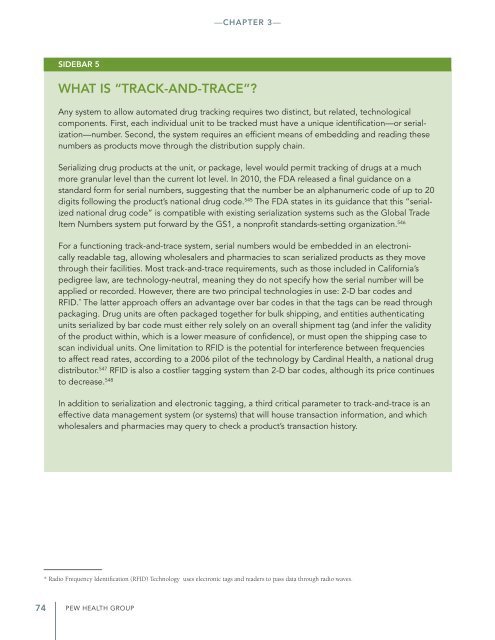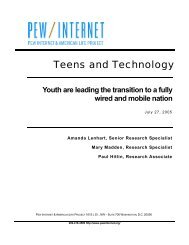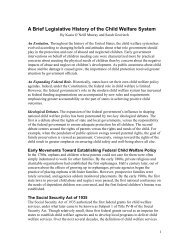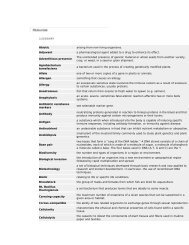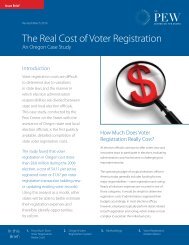After Heparin: - The Pew Charitable Trusts
After Heparin: - The Pew Charitable Trusts
After Heparin: - The Pew Charitable Trusts
Create successful ePaper yourself
Turn your PDF publications into a flip-book with our unique Google optimized e-Paper software.
—Chapter 3—<br />
Sidebar 5<br />
What is “track-and-trace”?<br />
Any system to allow automated drug tracking requires two distinct, but related, technological<br />
components. First, each individual unit to be tracked must have a unique identification—or serialization—number.<br />
Second, the system requires an efficient means of embedding and reading these<br />
numbers as products move through the distribution supply chain.<br />
Serializing drug products at the unit, or package, level would permit tracking of drugs at a much<br />
more granular level than the current lot level. In 2010, the FDA released a final guidance on a<br />
standard form for serial numbers, suggesting that the number be an alphanumeric code of up to 20<br />
digits following the product’s national drug code. 545 <strong>The</strong> FDA states in its guidance that this “serialized<br />
national drug code” is compatible with existing serialization systems such as the Global Trade<br />
Item Numbers system put forward by the GS1, a nonprofit standards-setting organization. 546<br />
For a functioning track-and-trace system, serial numbers would be embedded in an electronically<br />
readable tag, allowing wholesalers and pharmacies to scan serialized products as they move<br />
through their facilities. Most track-and-trace requirements, such as those included in California’s<br />
pedigree law, are technology-neutral, meaning they do not specify how the serial number will be<br />
applied or recorded. However, there are two principal technologies in use: 2-D bar codes and<br />
RFID. * <strong>The</strong> latter approach offers an advantage over bar codes in that the tags can be read through<br />
packaging. Drug units are often packaged together for bulk shipping, and entities authenticating<br />
units serialized by bar code must either rely solely on an overall shipment tag (and infer the validity<br />
of the product within, which is a lower measure of confidence), or must open the shipping case to<br />
scan individual units. One limitation to RFID is the potential for interference between frequencies<br />
to affect read rates, according to a 2006 pilot of the technology by Cardinal Health, a national drug<br />
distributor. 547 RFID is also a costlier tagging system than 2-D bar codes, although its price continues<br />
to decrease. 548<br />
In addition to serialization and electronic tagging, a third critical parameter to track-and-trace is an<br />
effective data management system (or systems) that will house transaction information, and which<br />
wholesalers and pharmacies may query to check a product’s transaction history.<br />
* Radio Frequency Identification (RFID) Technology uses electronic tags and readers to pass data through radio waves.<br />
74<br />
<strong>Pew</strong> Health Group


